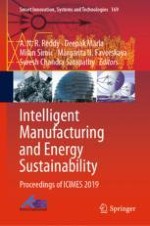2020 | OriginalPaper | Chapter
Mixture Design Using Low-Cost Adsorbent Materials for Decolourisation of Biomethanated Distillery Spent Wash in Continuous Packed Bed Column
Authors : Ishwar Chandra, Anima Upadhyay, N. Ramesh
Published in: Intelligent Manufacturing and Energy Sustainability
Publisher: Springer Singapore
Activate our intelligent search to find suitable subject content or patents.
Select sections of text to find matching patents with Artificial Intelligence. powered by
Select sections of text to find additional relevant content using AI-assisted search. powered by
